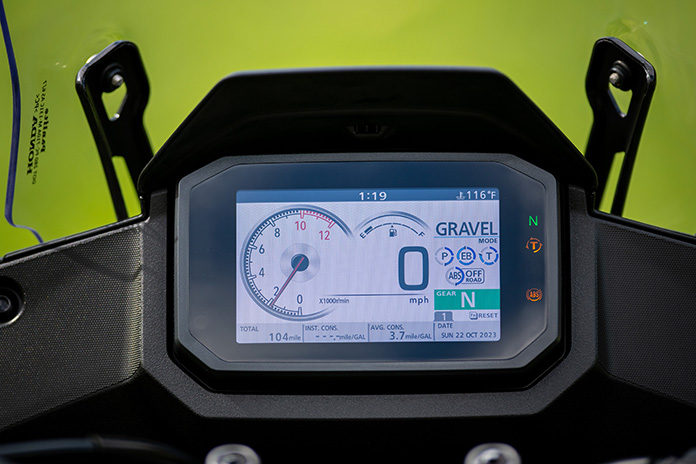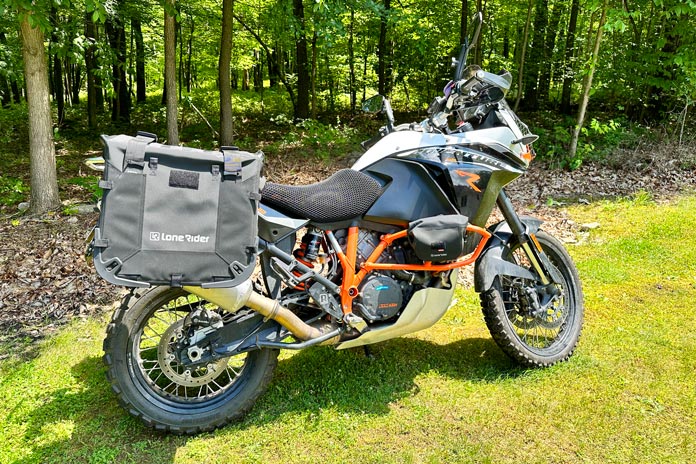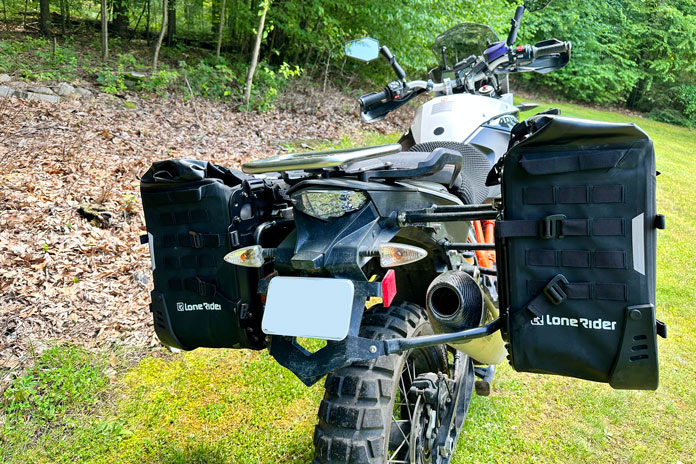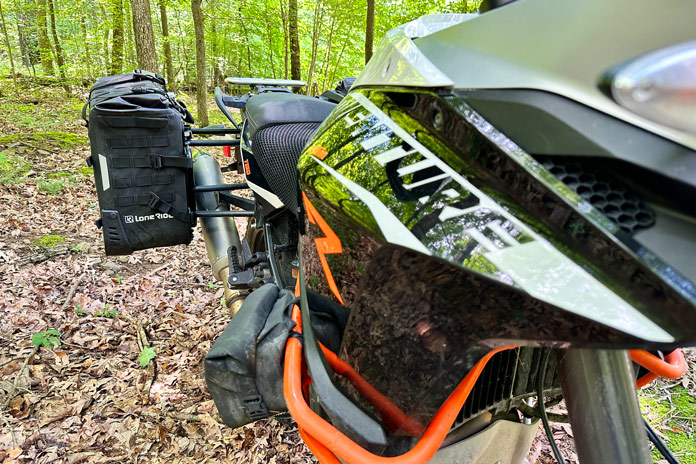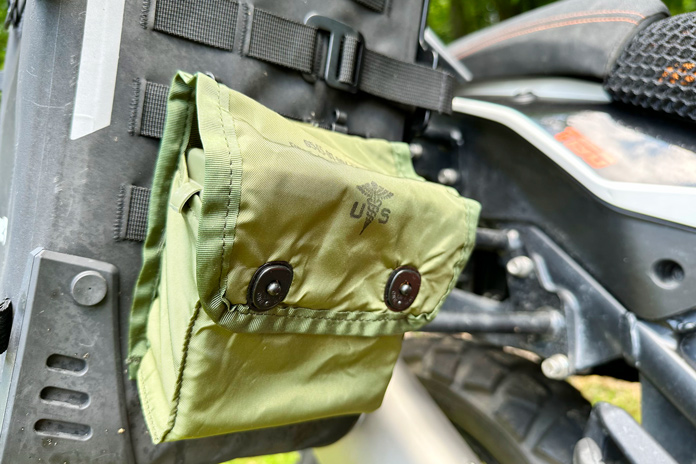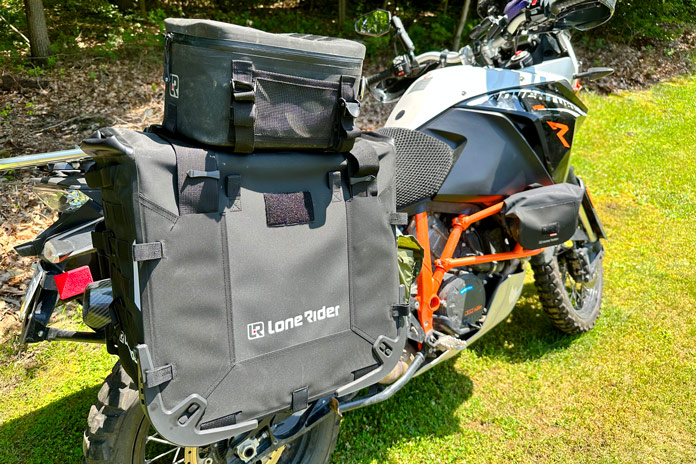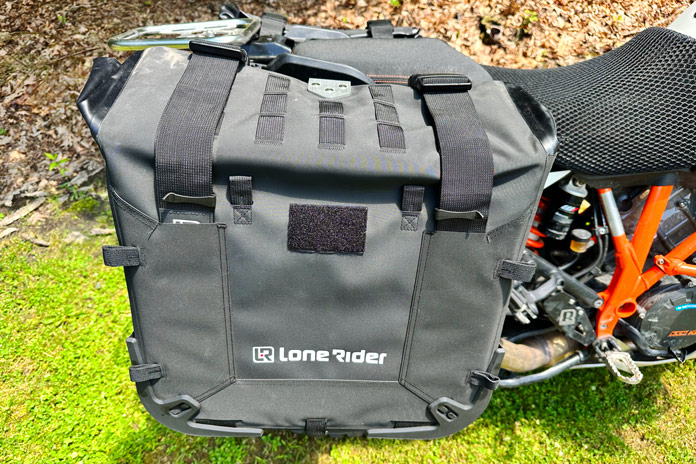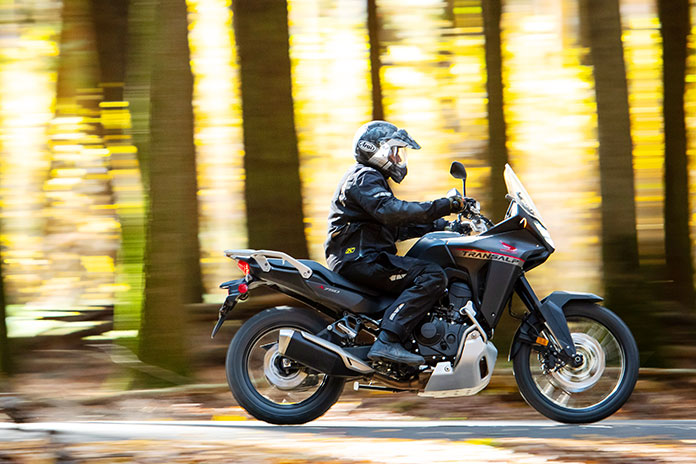
Making its much anticipated debut in the American market is the 2024 Honda XL750 Transalp, fresh off a successful year in Europe. Equipped with off-road features like 21-inch front and 18-inch rear spoked wheels and a quickshifter, the Honda Transalp has inspired debates about whether this bike is a step-up or step-down in adventure capabilities.
Nestled between the entry-level CB500X and the liter-class Africa Twin in Honda’s current lineup, how does the Transalp fare?
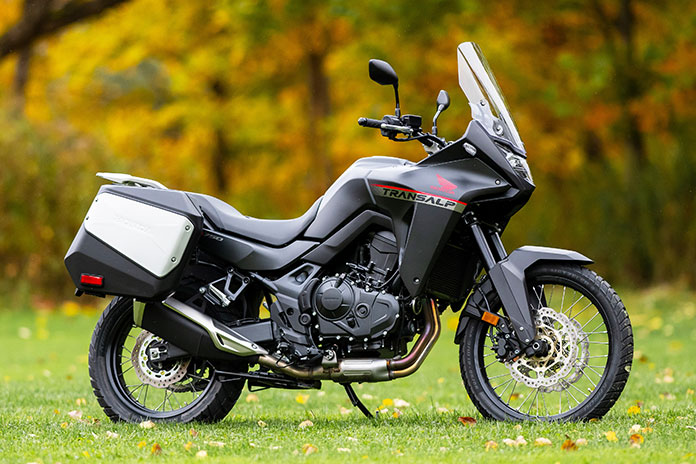
We took it for a two-day 250-mile test run amidst the vibrant autumn foliage of central Pennsylvania. Our route included the rugged section 4 of the BDR-X PA Wilds and challenging twists near State College – Penn State’s home turf.
Related: Backcountry Discovery Routes | Ep. 58 Rider Magazine Insider Podcast
To give the Transalp an off-road credibility check, American Honda fitted our test bikes with Bridgestone Adventurecross AX41 tires, one of my favorite tire sets for ADV riding. This decision enabled me to put the Transalp through its paces on demanding off-road trails.
Related: Bridgestone Adventurecross AX41 Adventure Tires | Gear Review
For the consumer version, expect either Metzeler Karoo Street or Dunlop Mixtour tires in sizes 90/90-21 and 150/70R-18. (Take note: They’re not tubeless, which might be a minor drawback for some.)
Have you ever questioned whether to “step up” your adventure game or “step down” for something more manageable? The Transalp may provide the answer for both.
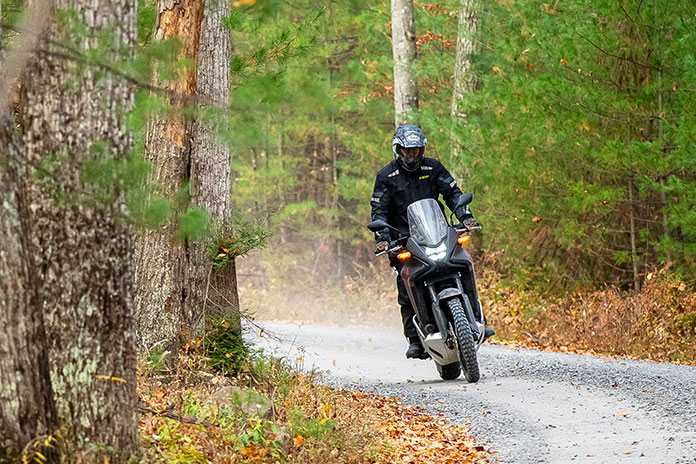
A Storied History and Design
After a successful year in Europe, the Honda Transalp finally landed on American soil this October, reviving a saga that originally began in 1986.
While American riders had only a fleeting encounter with this storied machine – curtailed after just two years due to the prevailing motorcycle culture and the bike’s dual-purpose nature – the Transalp has continually evolved overseas.
Originally debuting in Europe in 1986, the Transalp reached the U.S. for the 1989 model year with a liquid-cooled 600cc 52-degree V-Twin engine, 3 valves per cylinder, a full-cradle frame, and a box-section swingarm. Its 41mm fork offered nearly 8 inches of travel, while the rear featured Honda’s Pro-Link system and provided 7.5 inches of rear-wheel travel – a remarkable feat for its era.
In the subsequent years, the bike underwent several iterations, morphing into the XL650V in 2000 and later the XL700V in 2008.
Fast-forward to the present, and the fourth-generation Transalp – now labeled the XL750 – is a modern adventure bike. It inherits its 755cc parallel-Twin engine from the CB750 Hornet, a platform that regrettably remains exclusive to overseas markets.
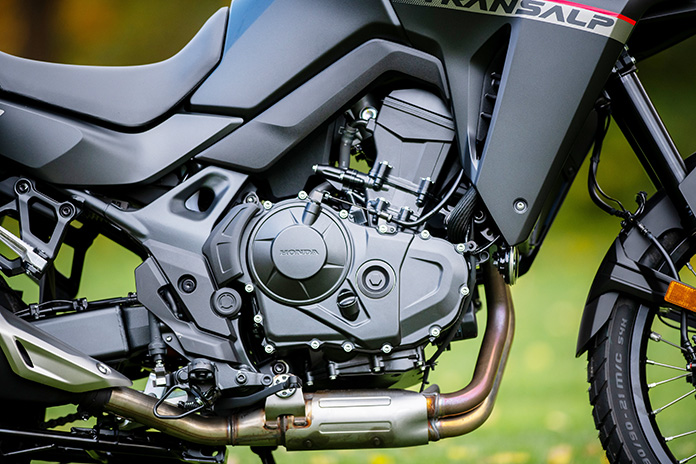
Honda Transalp: Engine, Clutch, and Transmission
Upon starting the Transalp’s 755cc Unicam parallel-Twin with 4 valves per cylinder, the 270-degree crank immediately makes its presence known. This short-stroke crank generates a pulsating effect that optimizes torque distribution across the rev range, making the engine particularly efficient in the mid- to upper range.
Honda’s new Vortex Airflow Ducting induction system enhances this power range by accelerating the intake-charge airspeed between 3,000 and 8,000 rpm, thereby improving throttle response.
Making a claimed 83 hp at 8,500 rpm, the engine offers a well-balanced power output suitable for both on-road and off-road riding, and it operates efficiently throughout the rev range. During our two-day test, I preferred keeping the revs high, switching between 3rd and 4th gears in faster BDR sections and dropping to 2nd gear for more technical challenges.
On Pine Flat Road, an optional rocky and muddy trail, I kept the bike in 2nd gear throughout. During slower sections, I manipulated the clutch for better traction before revving the engine up to 8,000 rpm to accelerate. The bike wheelied best in 2nd gear, either when navigating large obstacles or simply splashing through puddles.
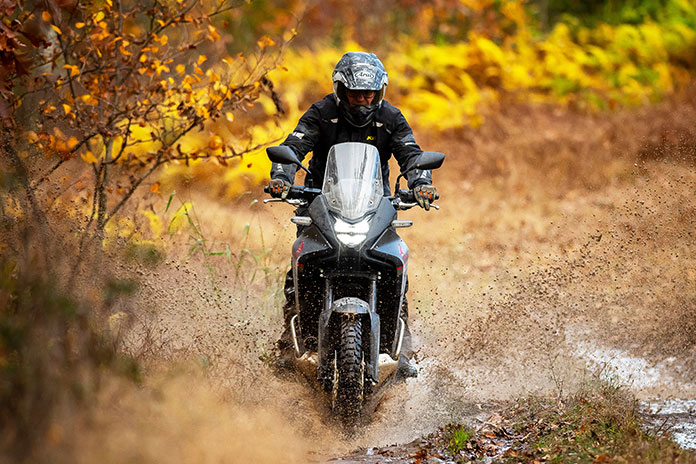
Honda’s slip/assist clutch, featuring F.C.C. Leaning Segment discs, reduces clutch drag torque by 30%. The system is especially noticeable in technical terrain, requiring only one finger to operate the clutch. Equally impressive is the quickshifter for clutchless up and downshifts. It operates smoothly, even between 1st and 2nd gears.
Honda also optimized the bike’s 459-lb curb weight with a 16/45 final drive ratio and a 520 chain. This configuration minimizes high revs while cruising at 75-plus mph and contributes to fuel efficiency. Even after rigorous use, the bike averaged around 46 mph. With a 4.5-gallon tank, expect over 200 miles between fill-ups.
The engine counterbalancer ensures a smooth ride. It is driven off the crank’s primary gear, reducing weight and complexity while maintaining engine compactness.
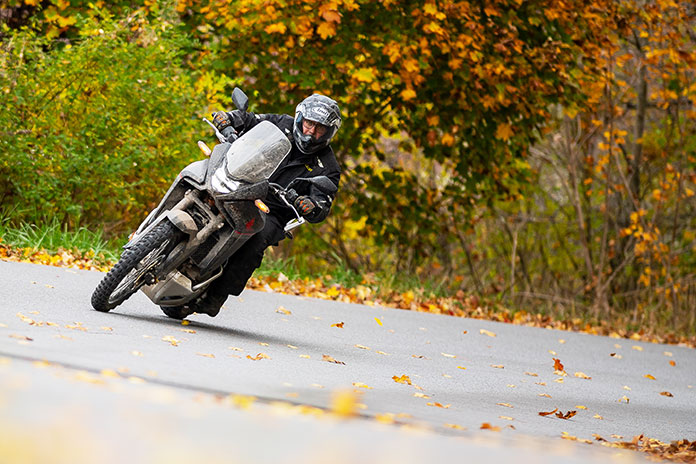
The Unicam engine design, like the one used on the Africa Twin’s 1,084cc powerplant, originated from Honda’s CRF450R motocross bikes. To improve reliability, Honda employs nickel-silicon-carbide cylinder plating, which is also used in the CBR1000RR-R and CRF450R.
Honda Transalp: Electronics
The Transalp has throttle-by-wire with 46mm throttle bodies and offers five ride modes: Sport, Standard, Rain, Gravel, and a customizable User setting. Each mode allows customization, enabling adjustments to engine power, engine braking, traction control (aka Honda Selectable Torque Control), and ABS.
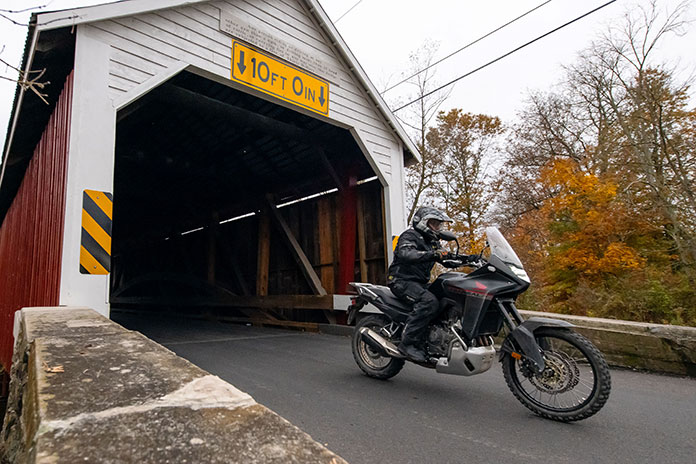
GEAR UP
- Helmet: Arai XD-4
- Jacket: Klim Latitude
- Gloves: Klim Baja S4 Gloves
- Pants: Klim Latitude
- Boots: Spidi XPD X-Trail Outdry
In contrast to bikes that reduce power across different modes, all five settings on this bike maintain access to full power. The variability lies in the power delivery. The Transalp yields a more subdued throttle response in Rain and Gravel modes while ramping up responsiveness in Standard and Sport modes.
Adjustments to these parameters are only possible when the bike is stationary. However, a conveniently located button on the left control panel allows quick mode-switching while in motion. After selecting a mode, simply releasing the throttle engages it.
During my evaluation, I found each mode to be highly effective in its designated setting. On dirt sections, I primarily used my customized User mode, configured for maximum power, minimal engine braking, and with both TC and ABS deactivated. This setup offered optimal traction and stopping capabilities, aligning perfectly with my riding preferences.
One issue to note is that turning off the ignition automatically reactivates the TC and ABS settings. To counter this, I left the ignition on for the majority of the day, making exceptions only for stops exceeding 10 minutes. This tactic also had the added benefit of keeping my grips heated during the cold morning hours. The heated grips have four intensity levels, and they’re among the warmest OEM grip warmers I’ve encountered.
Finally, all this information is prominently displayed on a 5-inch full-color TFT dash. Users can choose four display layouts, including a rally-inspired design featuring bar graphs rather than circular indicators.
The dash provides data on speed, rpm, fuel level, engine mode, trip distance, and gear position, as well as levels of TC, ABS, power output, and engine braking. The sole missing element is an ambient temperature readout – a feature I find particularly useful given the significant temperature fluctuations often encountered in backcountry rides.
Honda Transalp: Suspension and Brakes
Unfortunately for such a capable middleweight ADV bike, suspension adjustability is limited to spring preload. The Showa system includes a 43mm SFF-CA fork and a Pro-Link rear shock.
On paved roads, the bike demonstrated admirable stability, even under aggressive throttle and braking inputs. While the suspension felt slightly softer when navigating dirt terrains, it proved capable of handling the most demanding and intricate BDR gravel sections I encountered.
Suspension travel is 7.9 inches at the front and 7.1 inches at the rear. I weigh 185 lb, and I bottomed out the fork only twice during harsh landings, experiencing no issues with the rear shock. Ground clearance is 8.3 inches.
My test unit was equipped with an optional skid plate, adding an extra layer of engine protection. Without a skid plate, the bike’s exhaust system would be vulnerable, making off-road travel ill-advised.
As for the braking, the 2024 Honda Transalp performed flawlessly throughout my test. It employs 2-piston front calipers working in conjunction with dual 310mm “wave” discs and a single-piston rear caliper squeezing a 256mm wave disc. Off-road, with ABS disengaged, these offered a well-balanced braking experience; a single finger sufficed to engage the front brake, and applying ample pressure to the rear brake facilitated effective slowing.

On-road and with ABS activated, the system exhibited minimal pulsation during planned emergency braking exercises. It’s important to note that to maintain a competitive price point, the Transalp lacks some preferable on-road amenities, such as cornering ABS and cruise control. However, it does come with the convenience of self-canceling turnsignals!
Honda Transalp: Ergonomics, Seat Height, and Fairing Protection
Contrary to its specifications on paper, the Transalp’s ergonomic design performs impressively in real-world conditions. With a seat height of 33.7 inches and an optional lower seat at 32.6 inches, the bike comfortably accommodated my 30-inch inseam. This allowed for confident stops in uneven, rocky off-road terrains where taller bikes often pose the risk of a rider losing footing.
The seat’s design offers ample room for positional adjustments, even letting me sit close to the gas tank during fast off-road sections to roll my back forward, sit upright, and maintain front tire traction. The handlebar is sufficiently wide, offering good steering leverage. The rider triangle felt just right, and my 5-foot-11 frame never felt cramped.
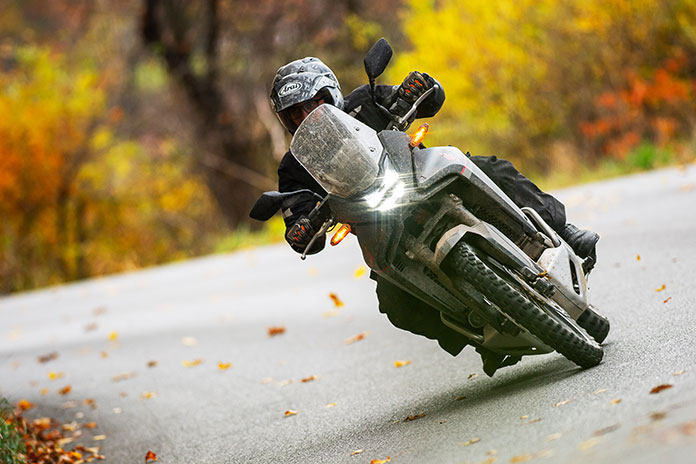
The stock footpegs are roomy enough for my size 11.5 boots and provide good grip once the rubber padding is removed. Whether standing or seated during high-speed sections, my feet enjoyed unrestricted movement, avoiding any uncomfortable contact with passenger pegs or engine components.
Designed by Honda’s Italian R&D team, the Transalp sports an unmistakable Italian flair in its fairing design. Although budgetary considerations led to a nonadjustable windscreen, the aerodynamics are still effective. Throughout my ride, even at speeds exceeding 80 mph, I experienced no head buffeting.
The Final Tally
At $9,999, the 2024 Honda XL750 Transalp is competitively priced, undercutting key rivals like the Yamaha Ténéré 700 by $800 and the Suzuki V-Strom 800DE by $1,350. When compared to European models such as the KTM 890 Adventure, the price difference climbs to nearly $4,000, though we’re not necessarily comparing apples to apples anymore.
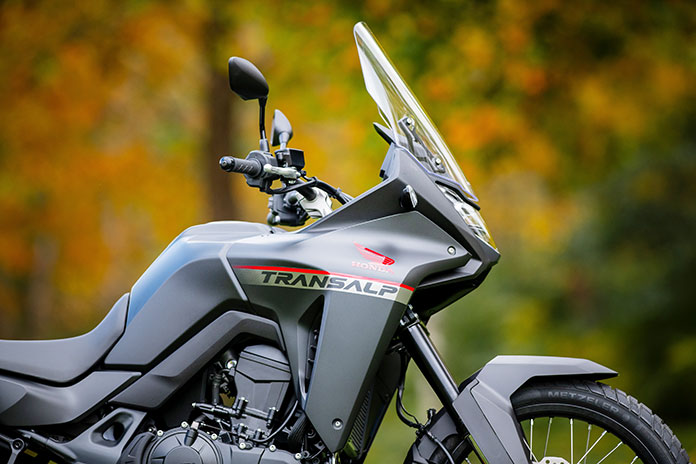
Back to our original question: Is the Honda Transalp built for riders stepping down from a larger adventure bike or for those stepping up from a smaller machine? I’d argue that Honda has navigated this dilemma masterfully, providing one of the most balanced middleweight platforms available.
The bike lends credence to Honda’s attempt to provide a harmonious blend of features tailored for both the beginner stepping up and the experienced rider who might be looking for a more approachable yet capable alternative.
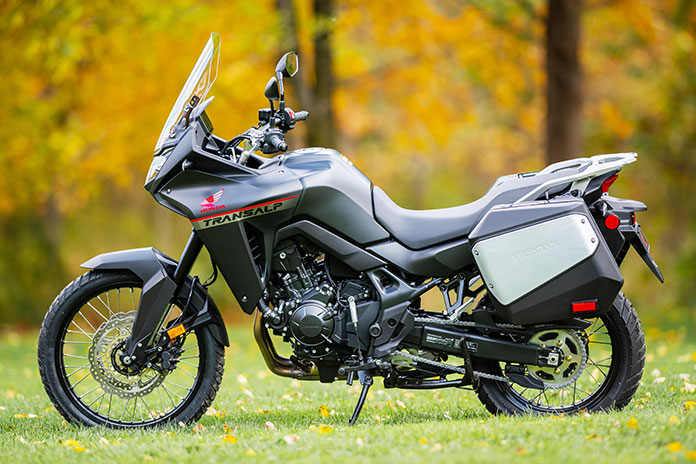
The step-up or step-down argument is put to rest – not by compromise but by balance. This balance is a hard-fought victory in product development and felt at the heart of the riding experience. In the Transalp, you’ll find a motorcycle that doesn’t ask you to choose between worlds. Instead, it encourages you to explore them all.
See all of Rider‘s Honda coverage here.
2024 Honda XL750 Transalp Specs
- Base Price: $9,999
- Warranty: 1 yr., unltd. miles
- Website: Powersports.Honda.com
Engine
- Type: Liquid-cooled, parallel-Twin, Unicam SOHC w/ 4 valves per cyl.
- Displacement: 755cc
- Bore x Stroke: 87.0 x 63.5mm
- Compression Ratio: 11.0:1
- Valve Insp. Interval: 16,000 miles
- Fuel Delivery: Programmed Fuel Injection, 46mm throttle bodies
- Lubrication System: Wet sump, 4.1 qt. cap.
- Transmission: 6-speed, cable-actuated slip/assist wet clutch
- Final Drive: Chain
Chassis
- Frame: Steel diamond truss
- Wheelbase: 61.5 in.
- Rake/Trail: 27 degrees/4.4 in.
- Seat Height: 33.7 in.
- Suspension, Front: 43mm Showa SFF-CATM telescopic inverted fork w/ spring-preload adjustment, 7.9 in. travel
- Rear: Pro-Link system w/ single Showa remote-reservoir shock, 7.5 in. travel
- Brakes, Front: Dual 310mm “wave” discs w/ 2-piston calipers & ABS
- Rear: Single 256mm “wave” disc w/ single-piston caliper & ABS
- Wheels, Front: Stainless steel spoke, aluminum rim, 21 in.
- Rear: Stainless steel spoke, aluminum rim, 18 in.
- Tires, Front: 90/90-21
- Rear: 150/70R-18
- Curb Weight: 459 lb
- Fuel Capacity: 4.5 gal
The post 2024 Honda XL750 Transalp Review | First Ride appeared first on Rider Magazine.
Source: RiderMagazine.com

